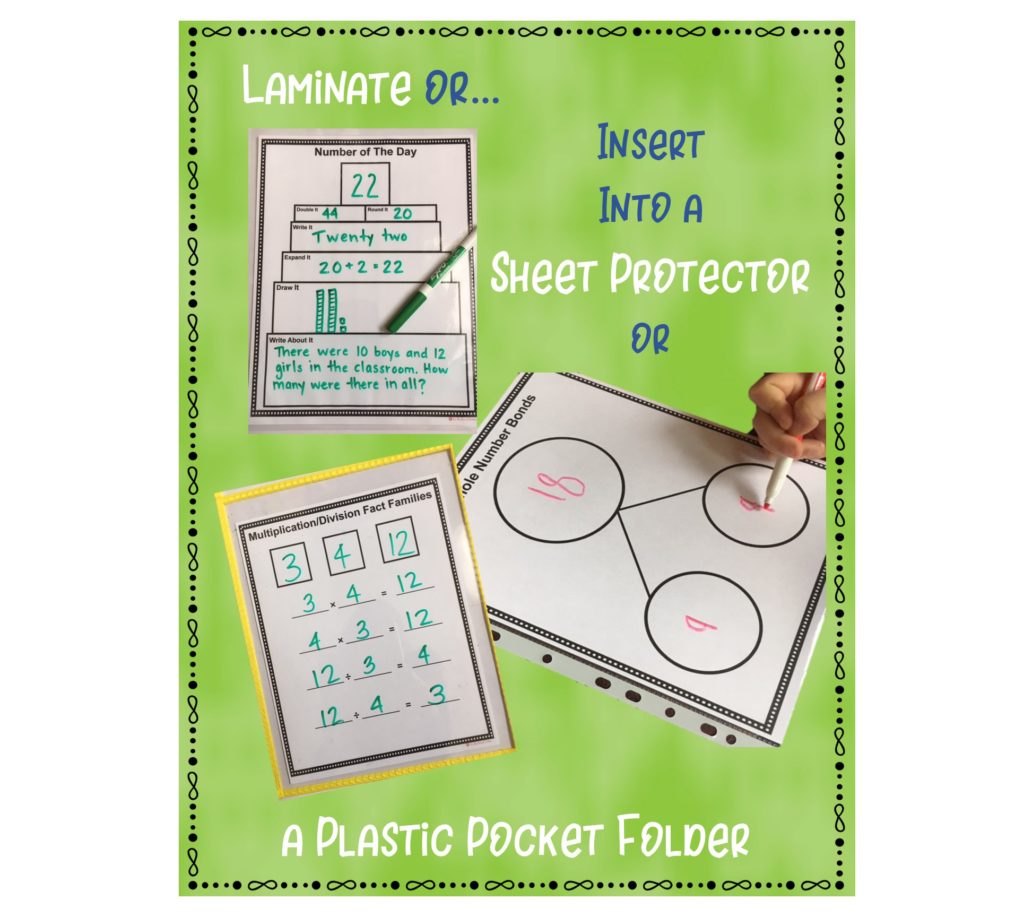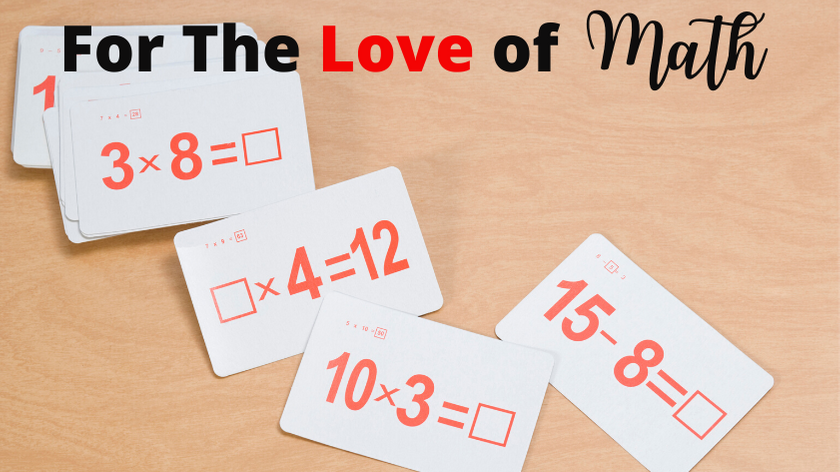 Teaching math has actually helped me become better at math, resulting in me becoming a better math teacher. Students enlightening each other with different avenues to get to the same answer has been a powerful teaching and learning strategy. Along with anchor charts, videos, student error analysis, games and so much more, teaching math is actually fun.
Teaching math has actually helped me become better at math, resulting in me becoming a better math teacher. Students enlightening each other with different avenues to get to the same answer has been a powerful teaching and learning strategy. Along with anchor charts, videos, student error analysis, games and so much more, teaching math is actually fun.
There are many published curriculums out there, such as Everyday Math, Math Trailblazers, The Harcourt series, Singapore Math, Eureka/EngageNY…and the list goes on and on. I think I used them all! School districts often pilot and purchase these companies’ materials to give it a try to see if it meets the needs of their students to find that in a few years, they will try the next best thing out there in the “math world.”
There is really no one size fits all curriculum that will meet the needs of every student. The key is good teaching, no matter which resource(s) your school district purchases.
Engageny.org, also known as Eureka Math is today’s go to math curriculum resource which ties to the CCSSI Math Standards. This is a free resource so even if your school or district uses another curriculum, you could always supplement with lessons from EngageNY. Its popularity is pretty impressive. Read, The Popularity of the Open Ed. Resource EngageNY, By the Numbers. I also highly recommend Embarc Online to support teachers, parents, and students. It’s free and coincides with Eureka math modules from K-8.
Each math module per grade has structured lesson plans with curriculum materials, including, lesson activity templates, independent practice, exit tickets, homework, and assessments. With a growing number of students struggling in math, structured lessons are key for student growth and progress.
The structure of the lessons look like this:
-
Fluency Practice (5 minutes)
-
Application Problem (10 minutes)
-
Concept Development (35 minutes)
-
Student Debrief (10 minutes)
Total Time (60 minutes)
Here’s a video of a live sprint in an elementary classroom, which could be part of your daily fluency practice.
Math sprints in all operations are easy to find or make. Here are some math sprint books:
Math Sprints, Workbook 1
Math Sprints, Workbook 2
Math Sprints, Workbook 3
Math Sprints, Workbook 4
Math Sprints, Workbook 5
Here are a few sprints for telling time and multiplication and division.
Sprint on time
Sprint on time2
Sprint on time3
Math sprint goal mult and div
Here’s a video that students love and can relate to. It’s called Math is Hard.

Khan Academy– Learn anything for free, great videos and tutorials
TenMarks– Free common core aligned math resources
Reflex Math– Game-based approach for building math fact fluency
Illuminations– Interactive site that includes lessons, brain teasers and more
Math Graphic Organizer Inserts are simple graphic organizers that slide into a sheet protector, plastic pocket folder, or can be laminated to use as a wipe-off board for math practice, review, or instruction.
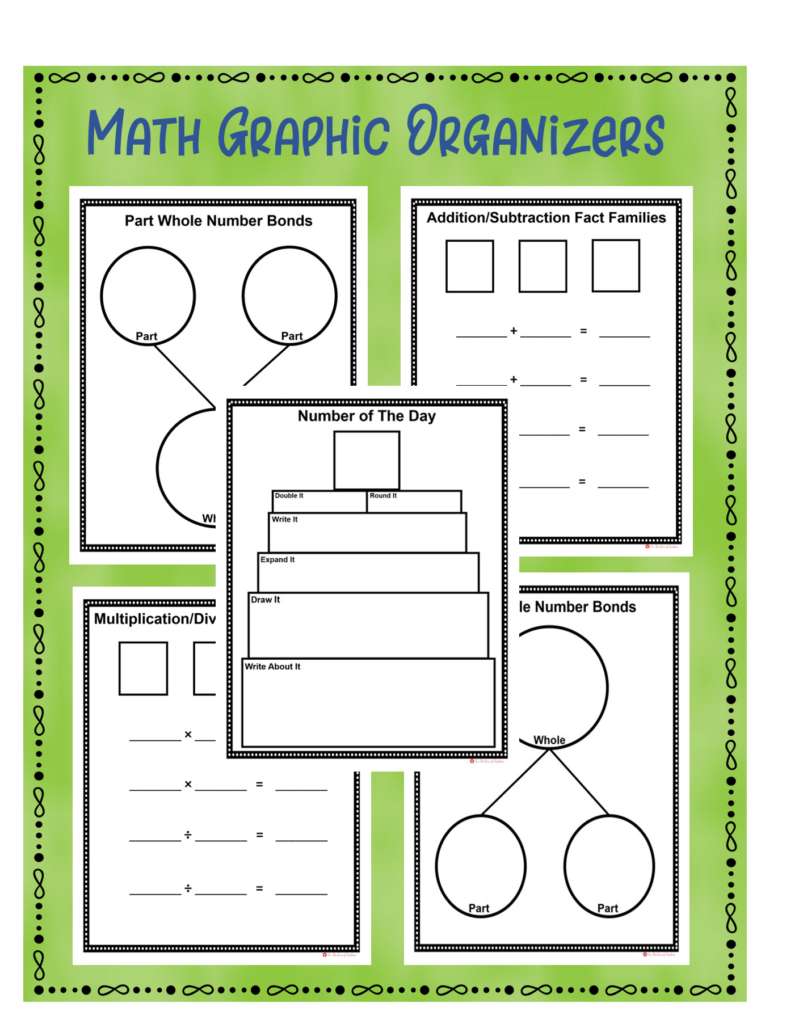
A variety of these handy dandy organizers on hand are great for small group instruction, whole group instruction, and math centers. I also used these graphic organizer inserts at the beginning of math workshop as a warm-up and at the end as exit tickets.
Included are the most common ones I used on a daily basis. Some come in two versions for differentiation and for different grade levels.
Includes 20 math graphic organizers:
*part-part whole number bonds (2)
*whole part-part number bonds (2)
*RDEW problem solving (2)
*Telling Time
*Addition/Subtraction fact families
*Multiplication/Division fact families
*Fraction Circle
*Number Lines (2)
*Place Value Mats (2)
*Frayer Model (2)
*Number of The Day
*Graphing
*Graph Paper (2)
Get these math graphic organizers at the Shop.
While teaching second grade for 10 years, I noticed that kids really struggled with math facts to 20 in both addition and subtraction. They had a hard time memorizing math facts and make careless errors. Once I started teaching students mental math strategies, they were able to add and subtract with fewer errors and frustration. This even helped them to learn how to multiply and divide with ease. I created this product based on exactly what students needed to feel successful in learning, understanding, and practicing mental math strategies in addition and subtraction to 20.
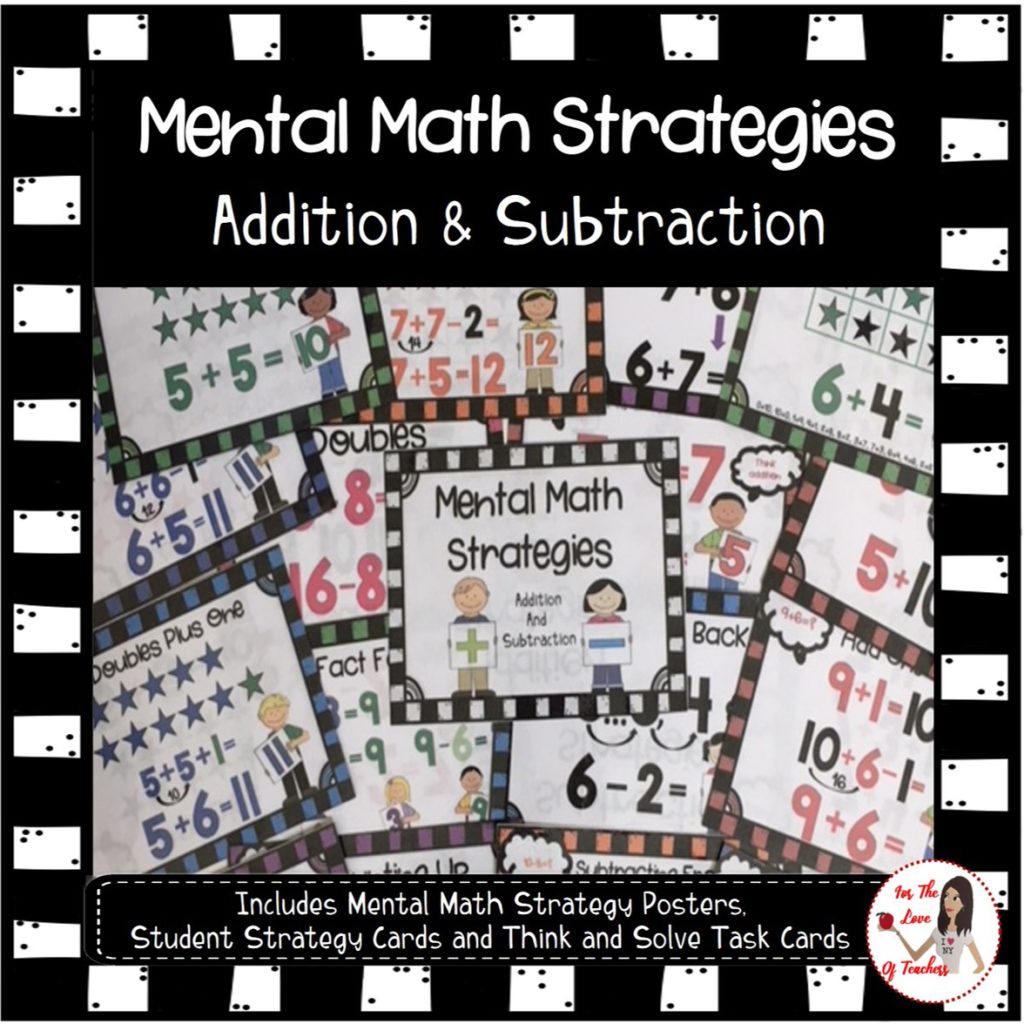
What you get:
•Two mental math strategies reference sheets for teacher and students –Addition mental math strategies and subtraction mental math strategies.
11 Addition Mental Math Strategy Posters —use these for reference while teaching, display them on a bulletin board, or post them in your math center, etc.
•Doubles
•Doubles Plus One
•Doubles Plus Two
•Doubles Minus One
•Doubles Minus Two
•Combinations of 10
•Add One to Nine
•Counting Up
•Make Ten
•Adding Ten
•Commutative Property
6 Subtraction Mental Math Strategy Posters —use these for reference while teaching, display on a bulletin board, or post them in your math center, etc.
•Counting Back
•Counting Up
•Doubles
•Think Addition
•Fact Families
•Subtracting from Ten
Want just the posters? Get them here.
•Mental Math Strategy Cards (size about 5.5 in x 4 in – can be copied front to back)—put these on a binder ring for each student to have their own set of mental math strategies to practice. Put a few sets in your math center too for reference, practice, study groups, etc. Want just the student strategy cards? Get them here.
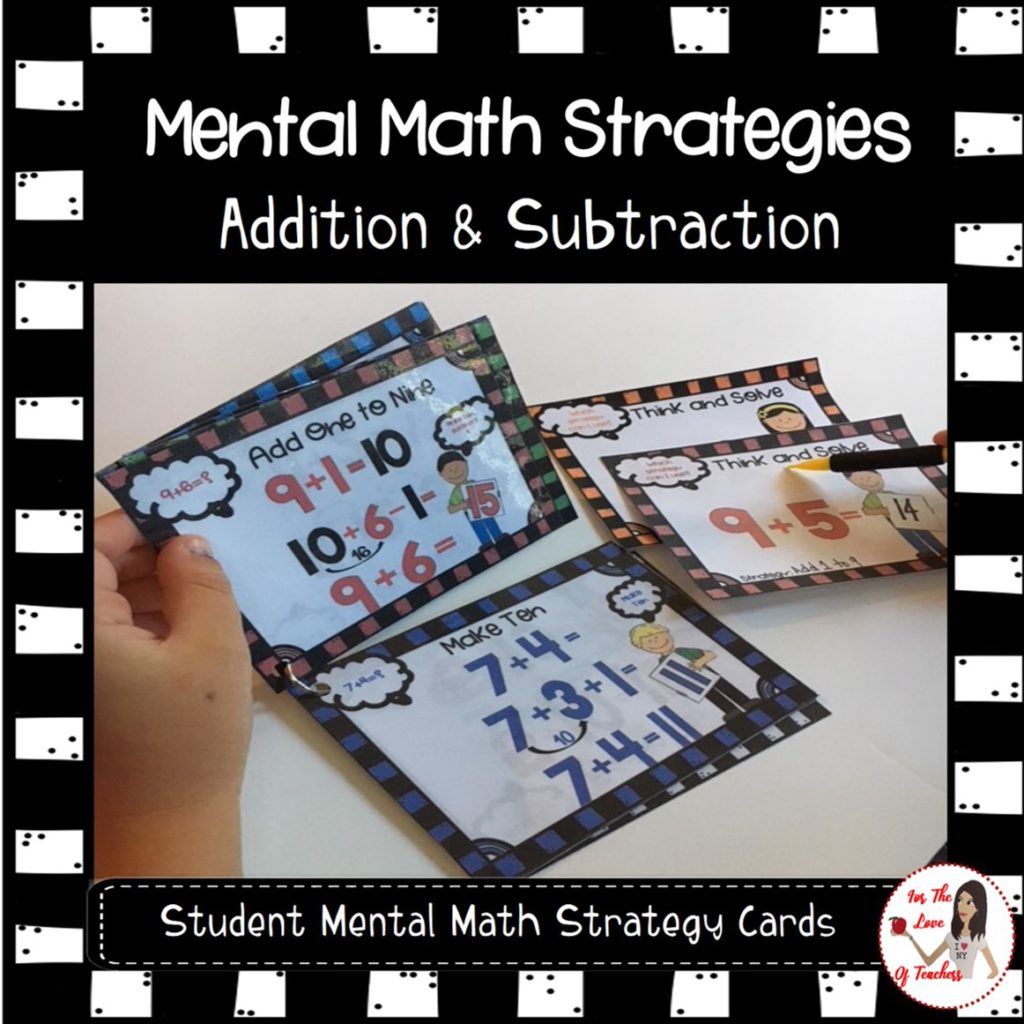
•Think and Solve Mental Math Task Cards- this includes 4 tasks cards for each math strategy (68 cards) Students think about which strategy they can use to solve either the addition or subtraction math fact (there could be more than one strategy used to solve). They solve and write the strategy on the card. Laminate for reuse. Want just the task cards? Get them here.
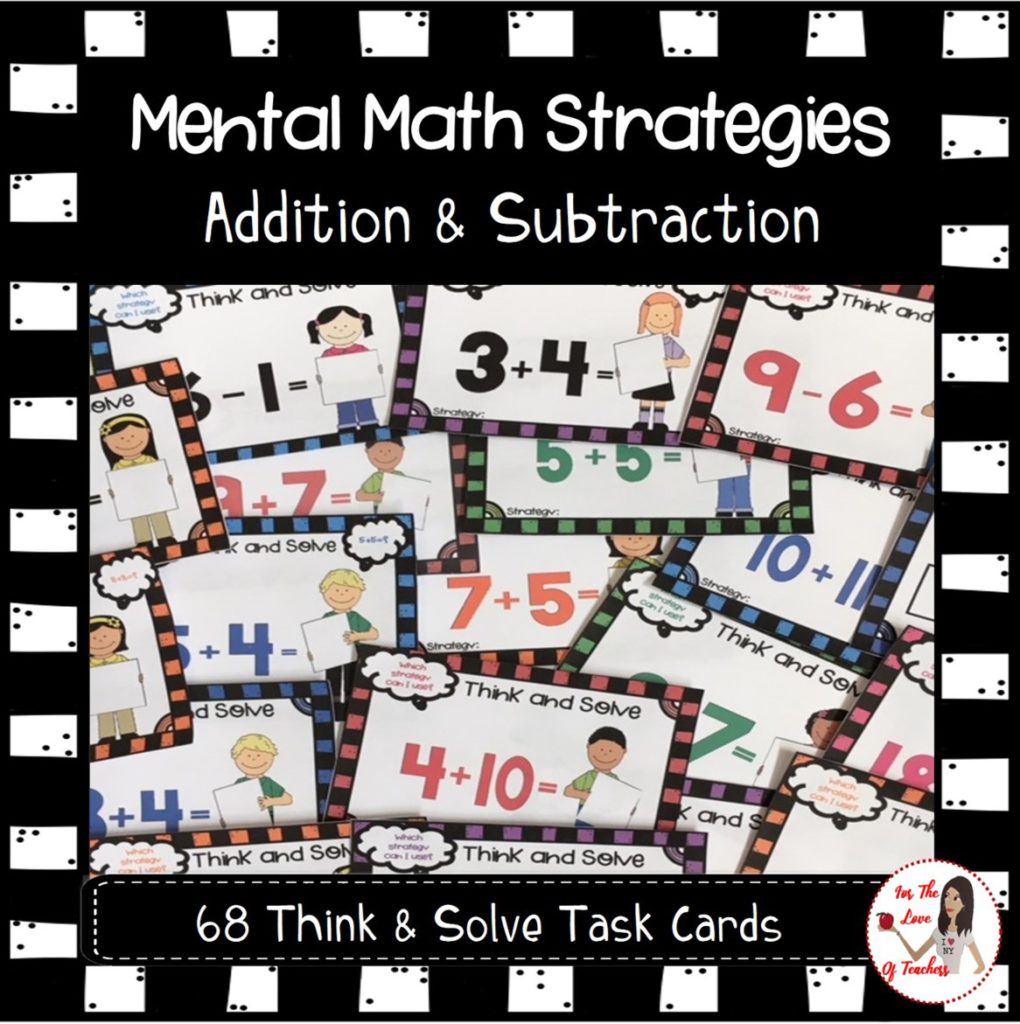
•Make Your Own Think and Solve Task Cards- Includes 4 templates (2 addition girl/boy and 2 subtraction girl/boy) so students can create their own task cards and swap with a partner to solve. Great for a small group activity, math center activity, exit ticket, etc.
Now in Google Slides: Mental Math Strategies Digital Task Cards: Addition & Subtraction
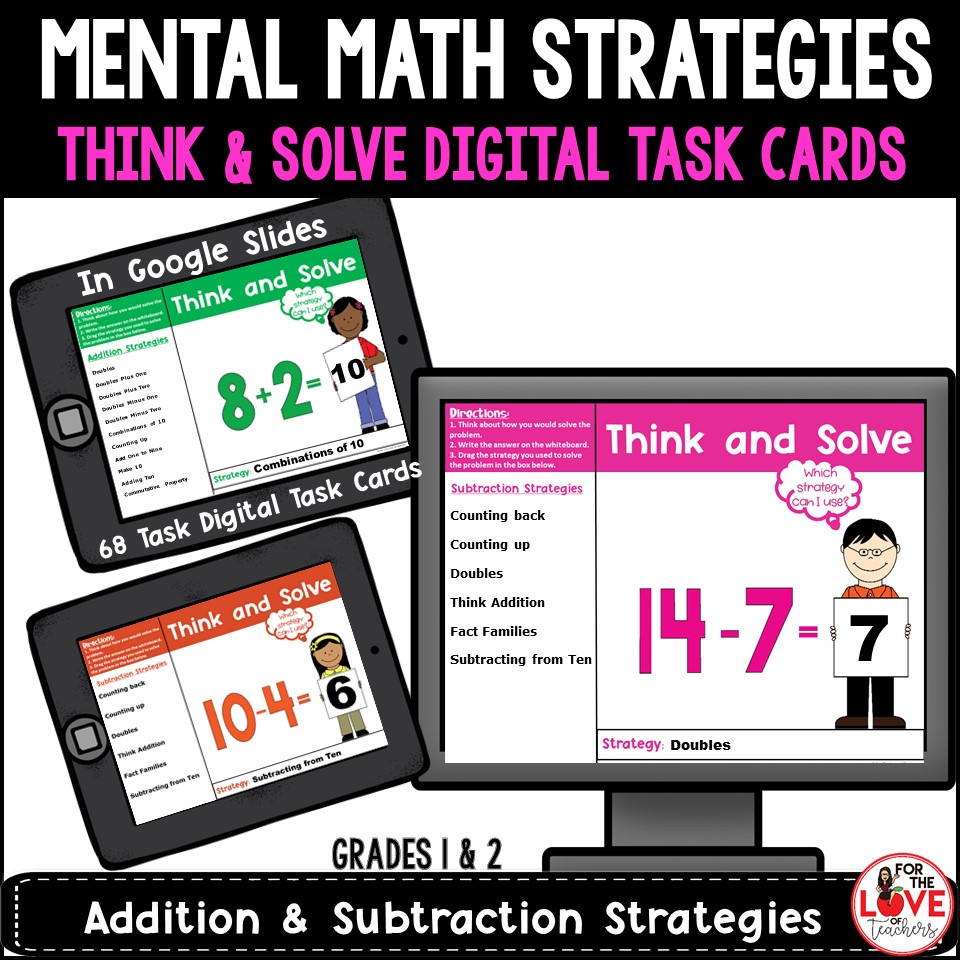
I hope these resources help your students build their math muscles to become strong, confident mathematicians. You can get the Mental Math Strategies bundle here.
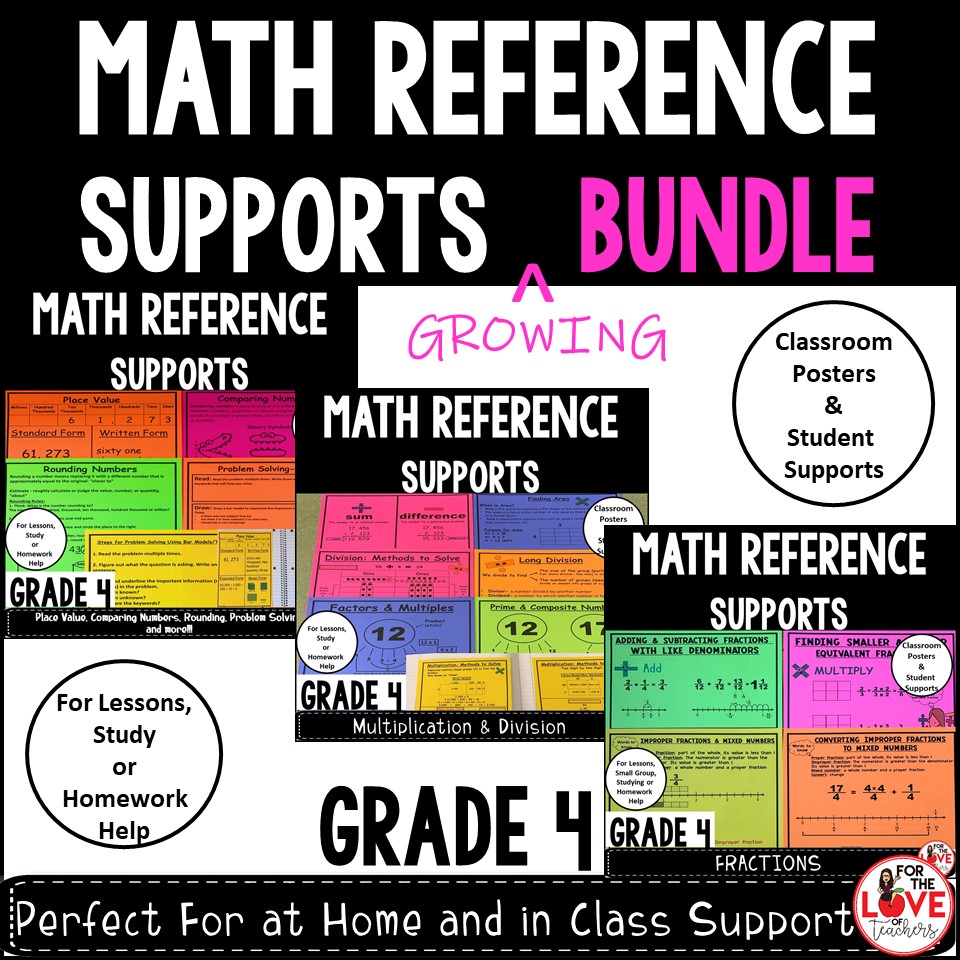
While teaching fourth grade I noticed that my students need a lot of support with grasping and applying math concepts and strategies. These reference sheets are like cheat sheets and a study guide for the math concepts and standards we cover in Grade 4 math.
Students glue the half sheets side by side into their math notebooks and take their notebooks home daily to assist with homework and/or study for an upcoming quiz or test. Parents find these math reference sheets helpful too because it gives them a better idea of what and how we are learning today’s math. They serve as supports for both parents and students.
I put the larger 8.5 x 11 reference sheets on a math reference wall or bulletin board to support my teaching and my students’ learning. I also use these in my small groups to support struggling students. We often refer back to these supports to review and practice math concepts and strategies.
Numbers & Operations in Base Ten
Includes:
•Focus Standards and Mathematical Practices
9 reference/cheat sheets in both full (8.5 x 11) and half sheets.
•Place Value (standard form, expanded form, written form and model form)
•Comparing Numbers
•Rounding Numbers
•Addition with Regrouping
•Subtraction with Regrouping
•Bar Models/Tape Diagrams (2 pgs.)- Part-Whole Model, Comparison Model,
Part-Whole Multi-Step Model, Sum & Difference Multi-Step Model
•Steps for Problem Solving
•RDEW Problem Solving outline (slide into sheet protector to use daily in class)
Multiplication & Division
Includes:
•Focus Standards and Mathematical Practices
8 reference/cheat sheets in both full (8.5 x 11) and half sheets.
•Operations (sum, difference, product & quotient)
•Finding Area & Perimeter
•Multiplication: Methods To Solve (Area Model, Place Value Chart, Partial Products, Standard Algorithm)
•Multiplication Two Digit By Two Digit: Methods To Solve (Area Model/Box Method, Partial Products, Standard Algorithm)
•Long Division (Divide, Multiply, Subtract, Bring Down)
•Division Methods to Solve (Area Model, Place Value Chart, Distributive Property Standard Algorithm)
•Factors & Multiples
•Prime & Composite Numbers
Fractions
Includes:
•Focus Standards and Mathematical Practices
17 reference/cheat sheets in both full (8.5 x 11) and half sheets.
•Whole Fractions
•Fractions- Decomposing fractions into smaller sums
•Finding Equivalent Fractions
•Finding Smaller and Larger Equivalent Fractions
•Comparing Fractions (Using tape diagrams and number line)
•Comparing Fractions (Using an area model and multiplication)
•Fraction Strips For Comparing & Ordering Fractions
•Improper Fractions & Mixed Numbers
•Converting Improper Fractions to Mixed Numbers
•Converting Mixed Numbers to Improper Fractions
•Adding and Subtracting Fractions With Like Denominators
•Adding & Subtracting Mixed Numbers
•Adding Fractions with Unlike Denominators
•Adding Fractions with Unlike Denominators
•Ways to Add Mixed Numbers
•Ways to Subtract Mixed Numbers
•Multiplying Fractions
I hope these reference sheets are both helpful and useful to you and your students as they develop into mathematicians.
Get these separately:
Math Reference Sheets- Supports Grade 4
Math Reference Sheets-Supports for Multiplication & Division- Grade 4
